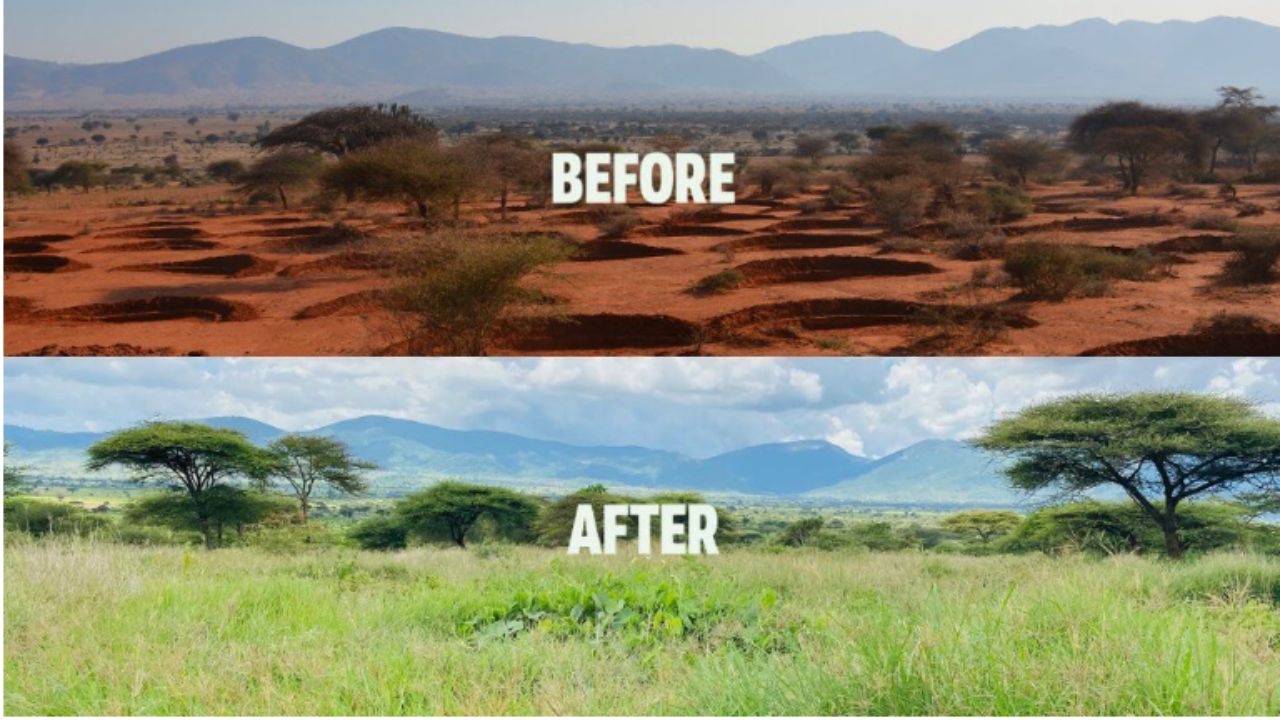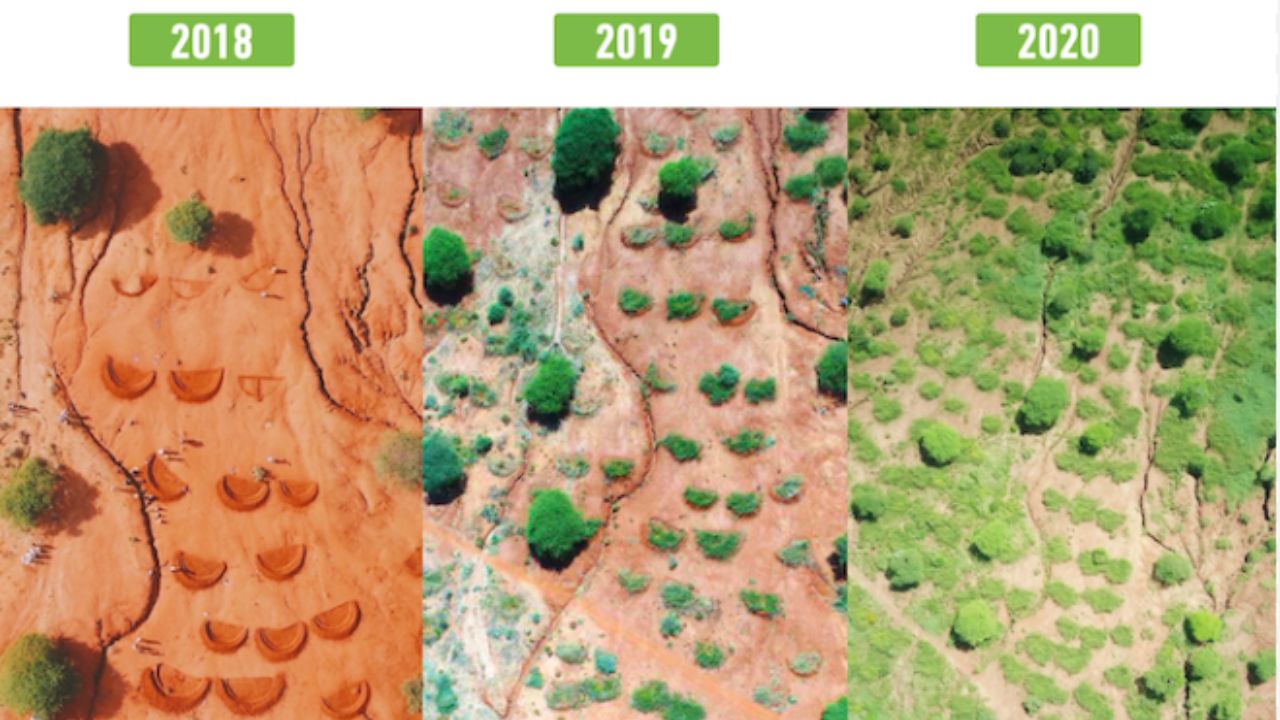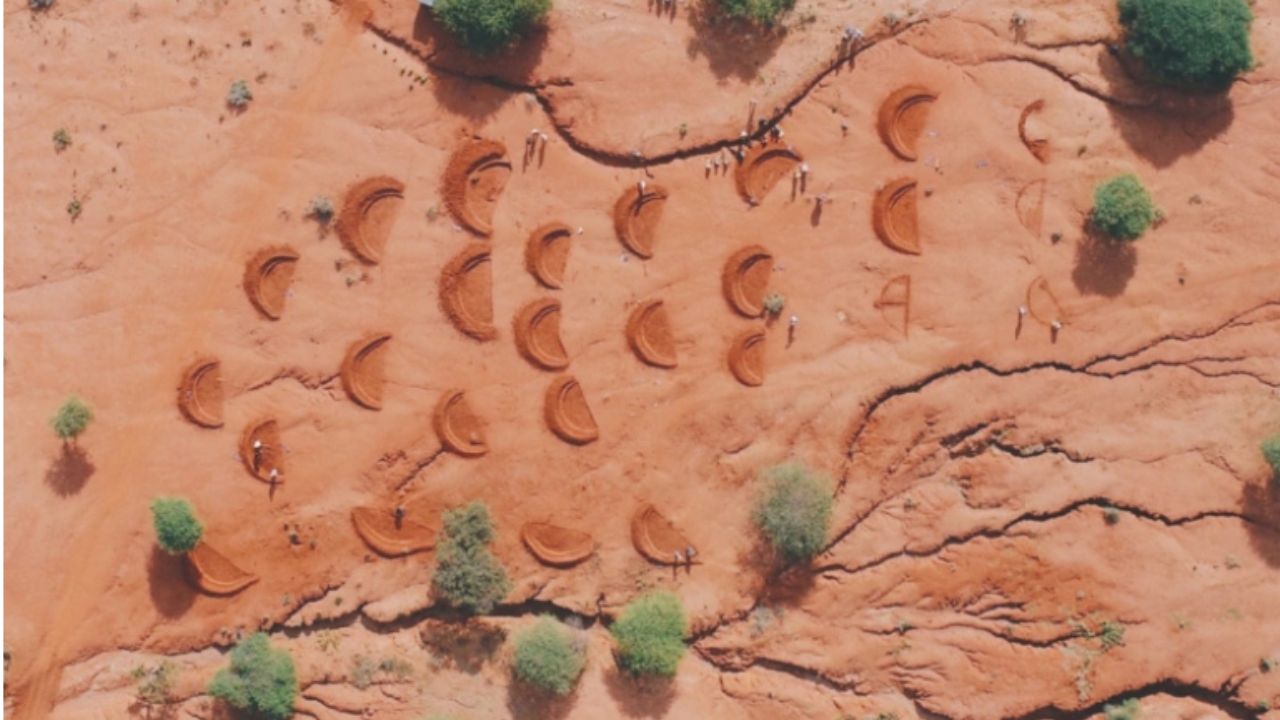Water bunds are structures that are used to harvest and retain water in areas that experience intermittent or unpredictable rainfall. These structures are crucial in ensuring that water is available for crop irrigation, livestock, and domestic use during periods of drought. In Africa, water bunds are used extensively, particularly in rural areas where water is scarce. In this blog, we will look at how water bunds are made in Africa, the materials used, and the benefits of these structures.
Materials used to make water bunds in Africa
The materials used to construct water bunds vary depending on the availability of resources in the local area. Some of the commonly used materials include soil, stones, sandbags, and vegetation. Soil is the most commonly used material for constructing water bunds, and it is readily available in most areas. Stones are used to reinforce the bunds and provide stability, while sandbags are used to fill gaps and hold the soil in place. Vegetation is also used, particularly in areas with loose soil, to prevent erosion and promote the growth of vegetation.
Steps to make water bunds in Africa
Step 1: Site Selection
The first step in constructing a water bund is selecting a suitable site. The site should be located in an area that is easily accessible and has a gentle slope to ensure that water can flow easily into the bund. The soil should also be suitable for bund construction and capable of retaining water.
Step 2: Clearing and levelling the ground
Once the site has been selected, the next step is to clear the area of any vegetation, rocks, or debris. The ground is then levelled to create a smooth surface for constructing the bund.
Step 3: Excavation
After clearing and levelling the ground, the bund's foundation is excavated to a depth of between 30 and 50cm, depending on the soil type and expected water volume. The excavation is done using manual labor, and the soil is piled up on the bund's downstream side.
Step 4: Construction of the bund
The bund's construction starts with the placement of a layer of stones or sandbags on the bund's foundation. The stones are placed in such a way that they form a stable base for the bund. Soil is then placed on top of the stone layer to create the bund's body. The soil is compacted to ensure that it is firm and stable.
The bund's height and width vary depending on the expected water volume and the length of the bund. Typically, the bund is constructed to a height of between 30cm and 100cm and a width of between 1m and 3m.
Step 5: Reinforcement
Once the bund has been constructed, it is reinforced using stones or sandbags. The reinforcement is done by placing the stones or sandbags on top of the bund and covering them with soil. The reinforcement helps to stabilize the bund and prevent erosion.
Step 6: Vegetation
The final step in constructing a water bund is the planting of vegetation on the bund's upstream side. The vegetation helps to prevent soil erosion and promotes the growth of vegetation, which helps to stabilize the soil.

Benefits of water bunds in Africa
Water bunds have numerous benefits in Africa, particularly in areas that experience periodic droughts. Some of the benefits of water bunds include:
> Water conservation: Water bunds are an effective way of conserving water in areas that receive erratic rainfall. The bunds collect and store water, which can then be used for crop irrigation, livestock, and domestic use during periods of drought.
> Soil conservation: Water bunds help to prevent soil erosion by reducing the speed of water runoff. The bunds also promote the growth of vegetation, which helps to stabilize the soil and prevent erosion.
> Increased crop yield: Water bunds help to increase crop yield by providing a consistent source of water for irrigation. This is particularly important in areas that experience erratic rainfall, where crops are often unable to reach their full potential due to water shortages.
> Livestock watering: Water bunds provide a reliable source of water for livestock, reducing the need for long-distance grazing and the risk of dehydration for animals.
> Reduced migration: Water bunds can help to reduce migration in search of water sources, which is a common occurrence in rural areas of Africa. This helps to keep families together and promotes the development of stable communities.
> Improved health: Access to clean water is essential for good health. Water bunds provide a reliable source of water for domestic use, reducing the risk of waterborne diseases.
> Environmental benefits: Water bunds help to promote the growth of vegetation, which has numerous environmental benefits, including carbon sequestration and improved air quality.
Challenges in constructing water bunds in Africa
While water bunds have numerous benefits, they also present several challenges in their construction and maintenance. Some of the challenges include:
> Limited resources: The construction of water bunds requires significant resources, including labor, materials, and equipment. In rural areas of Africa, these resources are often limited, making it difficult to construct and maintain water bunds.
> Maintenance: Water bunds require regular maintenance to ensure that they remain effective. This includes regular inspections, repairs, and vegetation management. In rural areas of Africa, where resources are limited, maintaining water bunds can be challenging.
> Land ownership: Land ownership can be a significant challenge in constructing water bunds, particularly in areas with multiple landowners. Coordinating the construction of water bunds across multiple landowners can be difficult, and disputes over land ownership can delay or prevent the construction of water bunds.
> Climate change: Climate change has led to increasingly unpredictable rainfall patterns, making it challenging to design water bunds that can cope with changing weather patterns.

Conclusion
Water bunds are crucial in ensuring water availability in areas that experience erratic rainfall patterns. In Africa, water bunds are widely used, particularly in rural areas, where water is scarce. The construction of water bunds involves site selection, clearing and levelling the ground, excavation, construction of the bund, reinforcement, and vegetation. The materials used in constructing water bunds vary depending on the availability of resources in the local area. The benefits of water bunds include water conservation, soil conservation, increased crop yield, livestock watering, reduced migration, improved health, and environmental benefits. However, constructing and maintaining water bunds presents several challenges, including limited resources, maintenance, land ownership, and climate change. Despite these challenges, water bunds remain an effective way of ensuring water availability in areas with erratic rainfall patterns in Africa.






